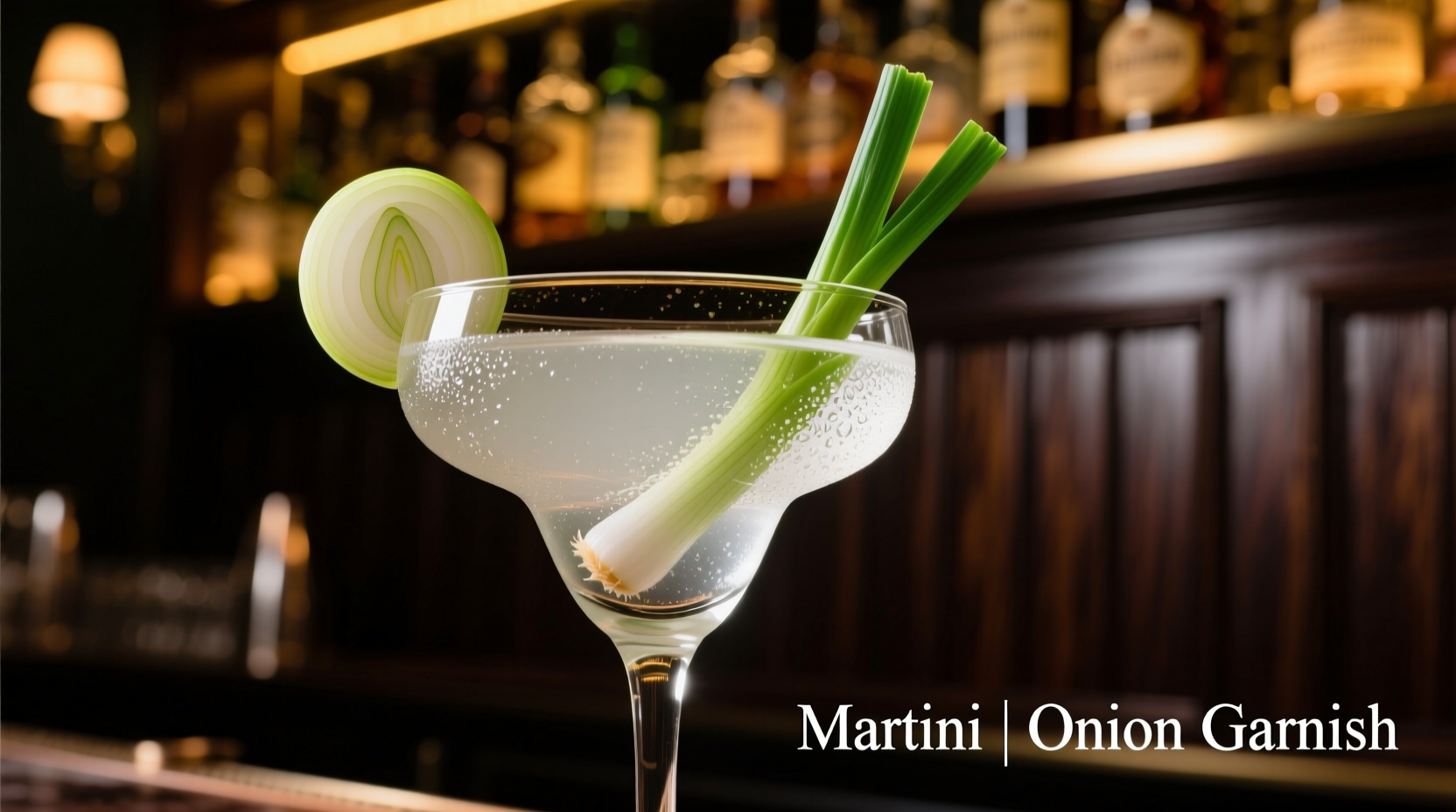Ever wondered why some sophisticated cocktail menus list a "martini with an onion" alongside traditional martinis? That's actually a Gibson cocktail—a refined variation that's been gracing bars since the late 19th century. Understanding this subtle but significant distinction transforms your cocktail knowledge and elevates your home bartending skills immediately.
The Gibson Timeline: How an Onion Changed Cocktail History
The Gibson cocktail emerged during America's Gilded Age, with competing origin stories that reflect its storied past. While the exact birthdate remains debated among cocktail historians, documented evidence places its appearance between 1898-1900. The Hotel de Paris Cookbook (1899) contains one of the earliest printed references, listing "Gibson's Special" as a gin-based cocktail with "a small onion" as garnish.
| Period | Development | Historical Context |
|---|---|---|
| 1898-1900 | First documented appearances | Recorded in hotel cookbooks and early cocktail guides |
| 1908 | Official recognition | Included in Jack's Manual as "Gibson Cocktail" |
| Prohibition Era | Underground popularity | Served in speakeasies as a "dry" alternative to sweeter cocktails |
| 1990s-Present | Modern revival | Featured in craft cocktail movement with premium ingredients |
Martini vs. Gibson: Essential Differences You Should Know
Many patrons request a "martini with an onion" without realizing they're ordering a completely different cocktail. The distinction matters for both flavor and tradition:
- Glassware: Both use the same iconic triangular cocktail glass
- Spirit base: Identical (typically 2.5-3 oz gin or vodka)
- Vermouth ratio: Same dry preparation (0.5 oz dry vermouth)
- Stirring technique: Identical preparation method
- Crucial difference: Gibson uses a pickled cocktail onion instead of olive or lemon twist
The onion garnish isn't merely decorative—it fundamentally alters the drinking experience. As cocktail historian David Wondrich notes in Imbibe! (Oxford University Press, 2007), the cocktail onion "adds a subtle savory note that complements the botanicals in gin without overwhelming them." This delicate balance explains why the Gibson remains popular among discerning drinkers who find traditional martinis too sharp.

Perfect Gibson Recipe: Professional Technique at Home
Creating an authentic Gibson requires precision. Follow this professional bartender's method for optimal results:
Ingredients
- 3 oz premium London dry gin (or vodka for modern variation)
- 0.5 oz dry vermouth
- 1-2 cocktail onions (see preparation below)
- Ice for chilling
Equipment
- Mixing glass
- Bar spoon
- Strainer
- Cocktail glass (chilled)
Step-by-Step Preparation
- Chill your cocktail glass in the freezer for 10 minutes
- Add gin and vermouth to mixing glass with ice
- Stir gently for 30-40 seconds until properly diluted and chilled
- Strain into chilled glass
- Add prepared cocktail onion(s) using a cocktail pick
Mastering the Onion: Professional Garnish Techniques
The quality of your onion garnish makes or breaks a Gibson. Most commercial "cocktail onions" contain excessive preservatives that create an artificial flavor. For authentic results:
- Onion selection: Use small pearl onions (about 1 inch diameter)
- Peeling method: Blanch in boiling water for 30 seconds, then transfer to ice water
- Brining solution: 1 cup water, 1/4 cup vinegar, 2 tbsp sugar, 1 tsp salt, plus optional spices
- Brining time: Minimum 24 hours for proper flavor development
- Serving temperature: Keep onions chilled until garnishing
According to the Spirits Business historical archive, the ideal Gibson onion should have "a delicate balance of sweet, sour, and savory notes" that enhances rather than dominates the drink. Many modern bars now use house-brined onions with custom spice blends to create signature variations.
When to Choose a Gibson Over a Traditional Martini
Understanding the appropriate context for ordering a Gibson demonstrates cocktail sophistication. This drink shines in specific situations:
- Business settings: The Gibson's cleaner finish makes it appropriate for pre-dinner meetings
- Food pairing: Excellent with seafood, charcuterie, or light appetizers
- Temperature considerations: Better suited for warmer environments (the onion garnish holds up better than olives)
- Personal preference: Ideal for those who enjoy savory notes in cocktails
Notably, the Gibson's historical association with business circles explains its enduring popularity in financial districts. As documented in the Cocktail Enthusiast historical database, Wall Street traders traditionally favored Gibsons during the early 20th century, creating a lasting connection between this cocktail and professional environments.
Common Gibson Mistakes to Avoid
Even experienced drinkers sometimes undermine their Gibson experience with these errors:
- Using regular onions: Standard onions are too large and overpowering
- Skipping the chill: Warm glasses rapidly warm the drink, altering flavor
- Over-stirring: Excessive dilution masks the delicate onion notes
- Incorrect vermouth ratio: Too much vermouth overwhelms the subtle profile
- Poor onion preparation: Using onions with artificial coloring or preservatives
Modern Variations Worth Trying
While purists insist on the classic preparation, innovative bartenders have created noteworthy variations:
- The Dirty Gibson: Adds a splash of olive brine for extra savory complexity
- The Smoked Gibson: Uses smoked salt in the brine for the onions
- The Gin & Tonic Gibson: Served over ice with tonic water for a refreshing twist
- The Vesper Gibson: Incorporates Lillet Blanc and vodka per James Bond's recipe
Remember that any variation should maintain the essential character of the Gibson—the distinctive onion garnish that defines this classic cocktail. As with all traditional drinks, understanding the original preparation helps you appreciate thoughtful innovations.











 浙公网安备
33010002000092号
浙公网安备
33010002000092号 浙B2-20120091-4
浙B2-20120091-4